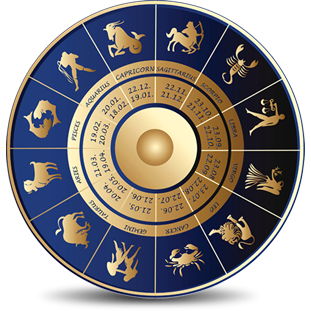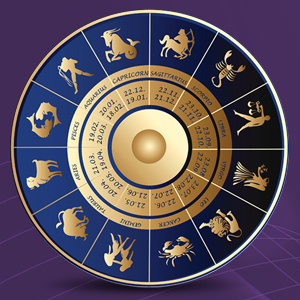

In the Hindu view, the planets are not mere celestial bodies circling the Sun. They are also divine beings—shown here as they were positioned on the first morning of the current millennium. Each is like a prism, conveying subtle energy from the far galaxies, thus impacting man’s affairs on Earth according to its unique nature and location in the sky. The ancient science of space and time that understands and maps this influence is called jyotisha (literally “science of light”) or Hindu astrology. Believing nothing, the skeptic is blind; believing everything, the naïve is lame. Somewhere between the two lies the lauded land of viveka, discrimination, which neither doubts every inexplicable phenomenon nor swallows every unexamined statement. In this issue we explore the uncanny Vedic technology of jyotisha that hoary knowledge, derived from secondary Vedic texts, which embraces both astronomy and astrology. It’s about time.
Astrology in India is about auspiciousness, about connections, about sacred timing and being in a flow with the ebb and tide of divine forces. Astrology is a part of Vedic self-understanding. We look to the stars to see ourselves better, to discover the mysteries that lie all about us and within us. In Rita dharma, that heavenly cosmic orderliness, stars are more than massive conglomerates of molecules or fiery furnaces fleeting afar. They are entities, potent presences that affect us despite their distance. There are, of course, many Hindus today who pooh-pooh such notions. “Stuff and nonsense,” they will cry, “What thoughtful person can accept that stars, so remote, influence life on Earth?”
Philosophically, Hindu astrology reflects the law of karma, which includes both free will and an aspect of predetermination, or fate. Predetermination means our present condition is the result of our past actions from previous lives; free will means we shape our future by our present actions—how we respond to the challenges. The birth chart represents a person’s karmic code, the samskaras with which he or she is born, imprinted on the subtle or astral body. This code is analogous to the genetic code that outlines the main potentials of the physical body. The birth chart indicates the main potentials of our entire life.
From an astrologer’s point of view, the birth chart is the most important document we have in life. Yet, like the genetic code, it is written in a mathematical language that requires decoding by a trained expert. According to the Vedas, when a soul takes birth, it descends through the heavens and the atmosphere before reaching Earth, taking on heavier sheaths of material density. It can only take birth in the physical plane at a time karmically in accord with its nature and destiny. The birth chart represents the seed pattern of its life; how it develops depends upon environment as well. For this purpose, Vedic Astrologer in Delhi are famous provide useful information regarding birth ospecious events and guidance for a sucessfull life.
Designed and Promoted by Webpulse - Awarded Best Web Designing Company India